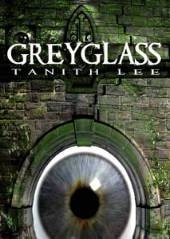Greyglass by Tanith Lee (book review).
There are some novels where the human characters seem less important than the place in which the story is set. This can be a landscape, a planet or a house. In Frank Herbert’s ‘Dune’ it is very much the planet that is the hero. Without the broad sweep of desert and the creatures that live there, there would be no story. The humans are insignificant compared to the grandeur of the setting. In Mervyn Peake’s ‘Gormenghast’, the sprawling gothic building is the focus of everything that goes on within its walls. In these cases, both planet and castle will endure long after the story told within the pages of the book is forgotten.
The central character in Tanith Lee’s ‘Greyglass’ is a house. As a child, Susan knew it as her grandmother’s home. Her mother took her there for visits every Sunday afternoon. Susan never wanted to go and saw the house as a round orange pumpkin set in over-grown gardens and occupied by a witch. This though is the image in the mind of a twelve year-old girl dragged along reluctantly to hear the regular arguments between parent and grandparent and listen to the old lady’s complaints about her house-keeper. After her grandmother dies, the house is left to a cat charity and nothing to her daughter, Anne.
For a while, the presence of the house is forgotten. Four years later, Anne and her new man are talking about going to the States and taking Susan with them. It is then that she finds her feet taking her back to her grandmother’s house. There are differences; for one thing it is full of cats. The other changes are more subtle. She is offered the chance to explore. The house is organic and it seems to grow. There are certainly more rooms than Susan ever knew about.
The initial trip to America is a disaster as far as Susan is concerned, she hates her mother’s boyfriend and he dislikes her so when she has the chance, she elects to stay in England sharing a flat with a friend. Each time there is a crisis in her life, Susan finds herself drawn towards her grandmother’s house.
Although this is Susan’s story, told over several decades, it is also the story of the house and Catherine Greyglass, Susan’s grandmother. It is a house that evolves from the antiquated family home via a cats’ home to an upmarket apartment block; from a scary witches house to a comforting sanctuary and whatever is happening in Susan’s life, it is always lurking in the background, a safety net that it takes her a long time to recognise.
As might be expected from any book by Tanith Lee, supernatural or fantasy elements will creep in. To the ordinary observer, Susan’s life is that anyone could have. Her mother’s neediness leads her into making naïve decisions while her effect on her daughter has exacerbated Susan’s personal low esteem. It is only when the house makes its presence felt that the supernatural elements make themselves felt. Even then, they are subtle and outsiders would be unaware of anything out of kilter.
This is perhaps one of Lee’s more accessible books, other than those specifically written for children, and is relatively short. The result is to give the reader a sense of warm satisfaction.
Pauline Morgan
February 2013
(pub: Immanion Press, Stafford, UK. 2011. Price: £10.99 (UK), $19.99 (US). 191 page enlarged paperback. ISBN: 978-1-907737-04-6
check out website: www.immanion-press.com







Excellent review of this book, which needs to be more widely known.